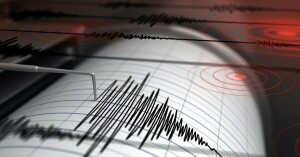No amount of upward electricity tariff adjustment would put an end to the circular debt menace. There has been enough evidence of the same for well over a decade. What did not work yesterday, will not suddenly work tomorrow. It will not hurt to stop pretending the revenues measures as the means to end the circular debt accumulation.
The government recently informed a parliamentary standing committee of the state of affairs on circular debt. Rest assured, the state is dire. As it has been for what now seems like an eternity. Some corners of the government were seen taking credit for the ‘reduced pace’ of the circular debt accumulation. One wonders where the pride in is reducing the pace of circular debt from Rs35 billion a month to Rs31 billion a month. If anything, this should ring more alarm bells and not the sense of comfort one sees.
The grim numbers tell the story. The stock is believed to have crossed Rs2.3 trillion as of December 2020 and is well on its way to clock Rs2.6 trillion by the time FY21 ends. If such numbers can be spun on the basis of year-on-year comparisons – that is a cause of worry and not jubilation. The contributors to the circular debt stock continue to remain the same old – from delayed tariff notifications to the perennial T&D losses and recovery at the discos, from the ill-timed clearance of subsidies to the inability to implement quarterly adjustment in time.
With the recent increase in base tariff across consumer categories, expect the pace of increase to slowdown a tad – but that is what has accounted for in the estimated increase of Rs436 billion for the year by June end 2021. Recall that the stock parked with the PHPL is treated as the country’s debt, where interest keeps compounding, and the mounting servicing cost contributes to the already unsustainable fiscal deficit.

It is the consumer that ends up paying for all the inefficiencies – at times in the form of increased base tariffs, or monthly and quarterly adjustments, or through paying for interest on the stock forgoing a substantial amount that could have otherwise been utilized for better purposes. Granted that the recent efforts to renegotiate terms with the IPPs will yield substantial savings over the long-term, but that pales in comparison to the quantum of the task at hand.
No amount of clearing the circular debt by any fancy way, be it cash or government securities will put an end to the menace. These are stopgap measures, different versions of which have been tried in the past. This will undoubtedly slowdown the increase for a little while and improve liquidity in the chain, but without addressing the root causes, there is no end to the problem.
The discos bleeding has continued unbated, and that gives a Rs200 billion head start to circular debt. The recovery at 90 percent is a problem that is bigger than the T&D losses at 18 percent, of which 15 percent is already allowed by the regulator. The inefficiencies at the generation end time and again lead to higher monthly adjustment requirements, which further complicates the payment chain between fuel suppliers and power producers. The problem has been around for long enough for the policymakers to know the solutions. Short sightedness is not an option. It was high time ten, five, three, two, or one year ago to get the act together. It won’t hurt to undertake real reforms before it gets beyond repair.

























Comments
Comments are closed.